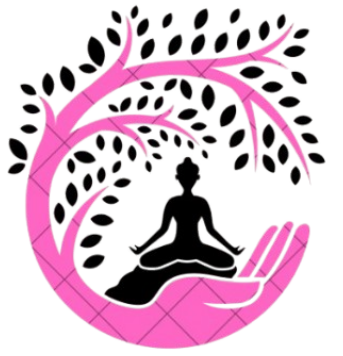Non-Invasive Treatments for Herniated Discs
Herniated discs can cause significant discomfort and functional limitations, prompting the exploration of non-invasive treatment options. These treatments aim to provide effective relief without surgical intervention, utilizing methods such as physical therapy, chiropractic adjustments, and acupuncture. Clinical studies highlight their ability to improve spinal alignment and reduce nerve compression. With growing evidence supporting their efficacy, these therapies present a compelling alternative to surgery, yet their full potential and limitations warrant further exploration.
Understanding Herniated Discs
A herniated disc, often referred to as a slipped or ruptured disc, occurs when the soft inner gel of an intervertebral disc protrudes through a tear in its tougher outer layer. This condition primarily arises due to degenerative disc disease, where discs lose elasticity and strength over time. Other causes of herniation include trauma, improper lifting, and repetitive strain. The symptoms can vary, with common presentations including radicular pain, numbness, or weakness in the limbs, depending on the affected nerve root. Diagnosis typically involves a combination of patient history, physical examination, and imaging studies such as MRI or CT scans, which provide clear visualization of the disc and surrounding structures, confirming the extent of the herniation and guiding treatment plans.
Benefits of Non-Invasive Treatments
Non-invasive treatments for herniated discs, such as physical therapy and epidural steroid injections, offer significant advantages, including reduced recovery time and minimized pain levels. Clinical studies have demonstrated that these approaches can effectively alleviate symptoms without the need for surgical intervention, thereby shortening the rehabilitation period. Additionally, patients undergoing non-invasive treatments often report substantial reductions in pain, which enhances their overall quality of life and facilitates a quicker return to daily activities.
Reduced Recovery Time
While traditional surgical interventions for herniated discs often result in extended recovery periods, non-invasive treatments offer a markedly reduced recovery time, making them an attractive alternative for patients. Techniques such as physical therapy, spinal decompression, and epidural steroid injections are designed to optimize recovery strategies, effectively shortening rehabilitation timelines. Evidence suggests that non-invasive approaches facilitate faster tissue healing and functional restoration compared to surgical options. For instance, a study demonstrates that patients undergoing physical therapy experience significant mobility improvements within weeks, contrasting with the months typically needed post-surgery. In addition, these treatments minimize the risk of complications, allowing patients to resume daily activities sooner. The emphasis on less disruptive procedures enables a streamlined recovery pathway, enhancing overall patient satisfaction and quality of life.
Minimized Pain Levels
Patients with herniated discs often experience significant pain, which can profoundly affect their quality of life. Non-invasive treatments play an essential role in pain management, offering effective symptom relief without the complications associated with surgical interventions. Techniques such as physical therapy, chiropractic adjustments, and acupuncture have demonstrated efficacy in reducing pain levels. These methods focus on alleviating pressure on the affected nerves, thereby minimizing discomfort. Scientific literature supports the use of non-steroidal anti-inflammatory drugs (NSAIDs) and epidural steroid injections as adjunct therapies, providing additional pain relief. In addition, advanced modalities like transcutaneous electrical nerve stimulation (TENS) contribute to thorough pain management strategies. Collectively, these non-invasive approaches are instrumental in enhancing patient outcomes by lowering pain perception and improving overall function.
Physical Therapy Techniques
A multitude of physical therapy techniques have been developed to address herniated discs, aiming to alleviate pain and improve function. Therapeutic exercises form a cornerstone, emphasizing core stabilization, flexibility, and strengthening of the paraspinal muscles. These exercises are designed to decrease disc pressure and enhance spinal alignment, supported by evidence highlighting their efficacy in reducing symptoms. Complementing these are manual techniques, including soft tissue mobilization and spinal traction, which target the reduction of muscle tension and improve joint mobility. Clinical studies validate that these interventions can lead to significant pain reduction and functional improvement. By employing a combination of therapeutic exercises and manual techniques, physical therapists tailor individualized treatment plans to address the specific needs of patients with herniated discs.
Chiropractic Care and Adjustments
Chiropractic care for herniated discs often involves specific spinal alignment techniques aimed at reducing nerve compression and restoring normal function. Evidence suggests that these adjustments can provide significant pain relief, potentially decreasing the reliance on pharmacological interventions. In addition, when performed by a licensed practitioner, chiropractic adjustments adhere to established safe treatment protocols, minimizing risk and enhancing patient outcomes.
Spinal Alignment Techniques
Numerous studies have explored the efficacy of spinal alignment techniques, particularly chiropractic care and adjustments, for managing herniated discs. These approaches focus on spinal mobilization, a technique that involves gentle movement of the spine to improve mechanical function and reduce nerve irritation. Chiropractic adjustments often aim to achieve postural correction, which is critical for alleviating the stress placed on herniated discs by misaligned vertebrae. Evidence suggests that precise manipulations can facilitate the re-establishment of normal spinal curvature, potentially aiding in symptom management. Clinical trials have noted improvements in spinal range of motion and reduction in neural compression. However, the degree of relief can vary based on individual anatomy and the severity of the disc herniation, necessitating personalized treatment plans.
Pain Relief Benefits
Many patients with herniated discs experience significant pain relief from chiropractic care and adjustments, which are designed to address the underlying biomechanical dysfunctions contributing to their condition. Chiropractic interventions employ specific pain relief strategies, focusing on spinal manipulation to enhance joint mobility and reduce discomfort. Evidence suggests that these alternative therapies can decrease nerve irritability and improve functional outcomes. Clinical studies report that patients undergoing chiropractic adjustments often experience reduced pain intensity and frequency, contributing to enhanced quality of life. By targeting the mechanical misalignments in the spine, chiropractors aim to alleviate the pressure on herniated discs, thereby promoting natural healing processes. This non-invasive approach serves as a viable alternative for individuals seeking to manage pain without resorting to surgical interventions.
Safe Treatment Protocols
Establishing safe treatment protocols for chiropractic care and adjustments involves a meticulous evaluation of the patient’s spinal condition and overall health status. This assessment guarantees the application of specific treatment guidelines tailored to individual needs, minimizing the risk of adverse effects. Evidence-based approaches are prioritized, employing diagnostic imaging and physical examinations to accurately identify herniated disc pathology. Practitioners adhere to established safety protocols, which include gradual introduction of manual adjustments and continuous monitoring of patient response. The efficacy of these protocols is supported by clinical studies demonstrating reduced pain and improved function in patients. Additionally, contraindications such as severe osteoporosis or spinal malignancy are carefully considered to prevent complications, guaranteeing that chiropractic interventions are both safe and effective for herniated disc treatment.
The Role of Spinal Decompression
Spinal decompression emerges as a pivotal non-invasive treatment option for herniated discs, leveraging mechanical or motorized traction to alleviate spinal pressure. By employing spinal traction, this technique aims to create negative intradiscal pressure, which facilitates the retraction of herniated disc material and promotes disc hydration. Enhanced disc hydration is essential as it can potentially restore the disc’s natural height and improve its shock-absorbing capabilities. Clinical studies indicate that spinal decompression effectively reduces pain and improves functionality in patients with herniated discs. The method is typically administered through a specialized table designed to apply precise, controlled tension along the spine. This targeted approach supports natural healing processes, providing a therapeutic avenue that may reduce the need for surgical intervention.
Exploring Acupuncture for Pain Relief
While the efficacy of various non-invasive treatments is continually examined, acupuncture stands out as a traditional yet increasingly validated approach for managing pain associated with herniated discs. This ancient practice utilizes specific acupuncture techniques such as the insertion of fine needles into strategic points to modulate the body’s energy flow. Clinical studies suggest that acupuncture may enhance pain relief methods by promoting endorphin release and stimulating nerve function. Additionally, research indicates that acupuncture can potentially reduce inflammation and improve blood circulation, which are essential for alleviating disc-related discomfort. Although individual responses can vary, acupuncture offers a compelling alternative for those seeking adjunctive therapy. Its integration into pain management regimens continues to be supported by emerging evidence, demonstrating its potential efficacy.
Lifestyle Modifications and Exercises
As acupuncture continues to gain recognition for its role in managing herniated disc pain, attention also turns to lifestyle modifications and exercises that can complement such therapies. Evidence suggests that specific lifestyle changes, like maintaining a healthy weight and quitting smoking, can alleviate pressure on spinal discs. Additionally, tailored exercise routines are essential in strengthening core muscles, enhancing flexibility, and improving posture, thereby reducing herniated disc symptoms. Clinical guidelines often recommend low-impact activities such as swimming, walking, and yoga, which minimize strain on the spine. Research supports the integration of physical therapy sessions to optimize exercise effectiveness and safety. Collectively, these strategies can reduce the frequency of disc-related pain episodes and improve overall spinal health.
Pain Management Through Medications
To manage pain associated with herniated discs, medications play an essential role by providing symptomatic relief and enhancing patients’ quality of life. Various medication types are utilized, including non-steroidal anti-inflammatory drugs (NSAIDs), opioids, and muscle relaxants. NSAIDs, such as ibuprofen, target inflammation and are commonly prescribed as first-line agents. Dosage guidelines suggest administering NSAIDs at the lowest effective dose to minimize adverse effects. Opioids, reserved for severe pain, require careful monitoring due to addiction risks. Muscle relaxants, like cyclobenzaprine, address muscle spasms, contributing to pain reduction. Adherence to dosage guidelines is imperative to prevent side effects and guarantee therapeutic efficacy. These pharmacological interventions, when tailored to individual patient needs, constitute a critical component of non-invasive herniated disc management.
Evaluating the Effectiveness of Non-Invasive Options
Evaluating the effectiveness of non-invasive treatments for herniated discs involves a thorough review of clinical outcomes and patient-reported measures. Key non-invasive options include physical therapy, chiropractic care, acupuncture, and epidural steroid injections. Comparative studies focus on treatment comparisons to determine efficacy in pain reduction, functional improvement, and patient satisfaction. Meta-analyses reveal that physical therapy often leads to considerable improvements in patient outcomes, particularly when tailored to individual needs. Chiropractic care and acupuncture demonstrate moderate benefits, though results can vary. Epidural steroid injections provide temporary relief, indicating a short-term benefit rather than a long-term solution. Consistent findings across multiple studies underscore the importance of personalized treatment plans, as individual responses to therapies considerably impact overall effectiveness and patient-reported outcomes.
Frequently Asked Questions
How Long Do Non-Invasive Treatments Take to Show Results?
Treatment duration varies, often requiring several weeks to months before patient expectations of symptom relief are met. Individual factors, including treatment adherence and severity of the condition, greatly influence the timeline for observing noticeable improvement in outcomes.
Are Non-Invasive Treatments Covered by Insurance?
Insurance coverage for treatment options varies based on the specific policy and provider. Policies generally assess the medical necessity, evidence of effectiveness, and cost-effectiveness of the treatment options before determining eligibility for coverage.
Can Non-Invasive Treatments Prevent the Need for Surgery?
Research indicates alternative therapies can reduce the necessity for surgery by alleviating symptoms. Patient experiences vary, but evidence supports that methods like physical therapy and acupuncture may effectively manage pain and improve mobility, potentially delaying surgical intervention.
What Are the Costs Associated With Non-Invasive Treatments?
The cost comparison of non-invasive treatments reveals varying price points, influenced by therapy type and duration. Treatment affordability depends on insurance coverage, with physical therapy, chiropractic care, and acupuncture generally being more cost-effective than surgical interventions.
Are There Any Risks or Side Effects With Non-Invasive Treatments?
Non-invasive treatments may present risks or side effects, varying in treatment effectiveness and patient experiences. Common side effects include temporary discomfort or mild allergic reactions, while effectiveness can depend on patient-specific factors, necessitating tailored treatment plans for ideal results.




